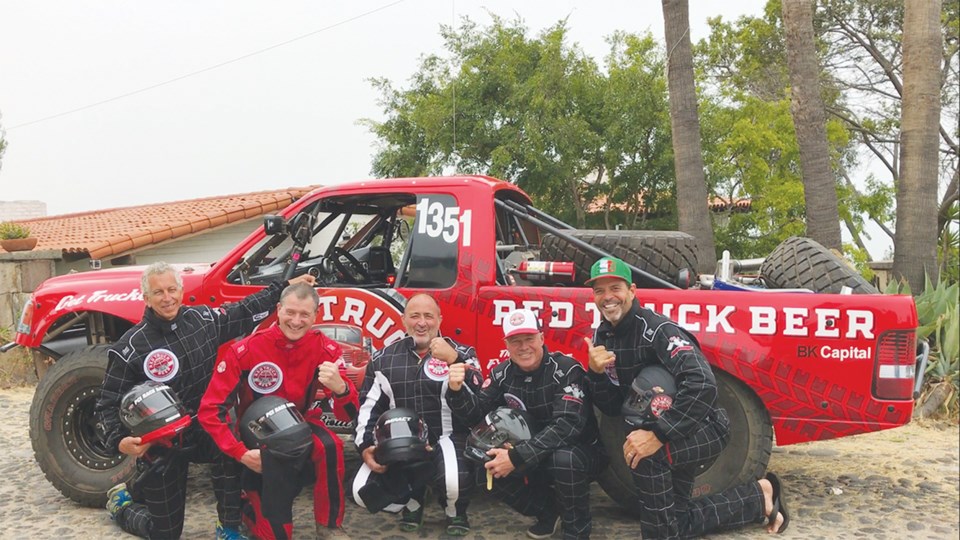When you’re travelling at breakneck speed through a Mexican desert, often blinded by dust clouds kicked up by racers just ahead of you, it’s crucial to have a reliable navigator riding shotgun.
That was the job of Squamish’s Greg McDougall during the Baja 500, which happened earlier this month.
“I felt like I wanted to drive it,” he said with a chuckle, also mentioning he was trying to figure out a way to get into the driver’s seat next year.
McDougall was one of several members of Vancouver’s Red Truck Beer team who took turns acting as co-pilot for driver Larry Nash, who finished 114th out of the 233 teams across all divisions that entered the race.
The team competed in the pro-truck category, which uses vehicles that are a step down from trophy trucks, the highest performance off-road racing vehicles.
Trophy trucks average at around $600,000, while pro trucks are often between $150,000 to $175,000.
But while Nash may have had the glory of being behind the wheel, the fate of the race often lay with McDougall.��
Navigators are important in most every offroad race, but in the Baja 500, their role takes on increasing importance, as the 500-mile race is renowned for its punishing, brutal terrain, which can often be near-impossible to run without help.
Drivers often run parts of the course blind, as dust kicked up during the race can take minutes to settle. In these cases, the person behind the wheel will often need to rely completely on the navigator, who will be calling out every turn.
Illegal booby traps are often laid on race courses by pranksters, which can dramatically increase the chances of an accident.��
Hidden dug-out pits are one common example of these obstacles, and while authorities do their best to bar pranksters from altering the race course, the sheer size of the Baja 500 makes it virtually impossible to police every stretch of road.
Furthermore, some areas in the course have regulated speeds, and it’s often up to the person riding shotgun to tell the driver if they’re going too fast. Disobeying those rules can lead to disqualification.
It’s a responsibility not lost on McDougall, who said, “To an extent – I don’t know if I’d go quite that far – but you got both of your lives in your hands.”
But when it comes to gathering the information used by the navigators, it’s the pre-running team who helps make that happen.
David Norona, another ������Ƶappresident, was helping pre-run the course.
It’s a painstaking process that lasts about a week.
Using dirtbikes or a Can-Am X3 dune buggie in order to save the actual race vehicle from wear and tear, Norona and the rest of the team drove through the course, taking detailed notes.
Some examples include descriptions of the terrain, obstacles in the area, the degree of each turn, and even the lighting and visibility of each stretch of road.
Norona said the Baja is one of those experiences that can be totally different when experienced, as it is often harder than many imagine.
“It’s very remote – it’s extremely dangerous,” said Norona. “They usually have deaths in the race, and you can see why when you do it.”
��
***Please note this is a corrected article: a prevous version incorrectly spelled the event name.




